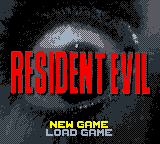its just such a bummer it never became even a minor success. Nintendo has dominated the handheld market since the OG Gameboy and it never let anyone else get a taste of the pie
It's a conversation as old as time itself, at this point, but it's not true that there were never any other takers in the field, Nintendo just had the best recipe that worked (at the very least) "well enough" to become a success with in the handheld market. They hit it out of the park at the very beginning with the first GB with very solid games (compared to what else was available as a handheld experience, at the time) and absolutely struck gold between Mario Land and Tetris. Everything that followed was enough to keep a nice pace up, but the negatives of the system (black and white <- clearly not a showstopper, and that horrid display) were enough to relegate the system to a distant second/cool as a novelty, behind what was expected of a legit console experience. Still, for the price & what you got, it worked.
I had a Lynx since it was new, and of course spent a little time getting familiar with the TurboExpress and Sega Game Gear - they were all neat, and the presentation in each case was miles beyond what the Gameboy was offering, but in any case it really felt like each was trying to compete more on a level with the 8-bit console (or better) and that was probably to their detriment, ultimately. The things were just too big, the beautiful color screens were too battery-sucking, and the final nail in the coffin was that as decent as each of those machines' libraries were, none were able to stand up to the steady flow of NES ports that kept coming on the Gameboy.
Perhaps if they went for more of a compromise (Gameboy pocket-style tech, which means a significantly better B/W screen with much less power consumption than their LCDs) then that would have helped. I think you still have the issue of the libraries, but I can't really think of much else to fight against that.
By the time the next handhelds came out to battle The Gameboy Color - specifically, the Neo Geo Pocket Color and to whatever lesser extent, the Japanese Wonderswan - it was just more of diminishing returns. They were never gonna do well in the Western market (and Bandai didn't even bother to try with Wonderswan, obviously). I guess the point I am trying to make is, that it was never a case of "Nintendo not letting anyone else into the market" because there were a lot of earnest efforts by its competitors, but more so that no one else had a realistic and comprehensive understanding of how to be successful in that market, by comparison.
It is quite interesting to think about in hindsight. Even the Gameboy Color (already, that's several years of iterations of the base model) and more tellingly, the Gameboy Advance were STILL hampered by those godawful visibility issues, and the market still favored those devices. At that point they were the only ones that had all the games that people wanted to play, and let's face it, they were still mainly considered toys/"junior devices" to complement a gamer's main console, or just less-expensive things to keep the kids quite while on vacation.

